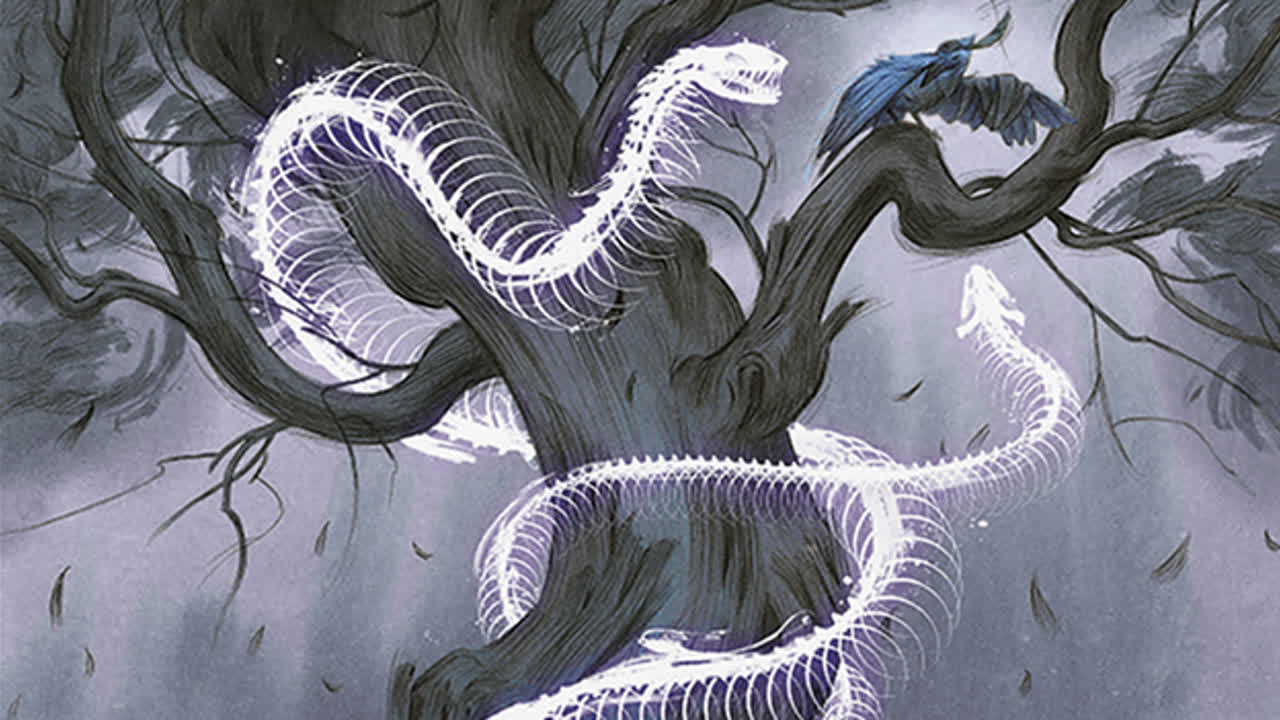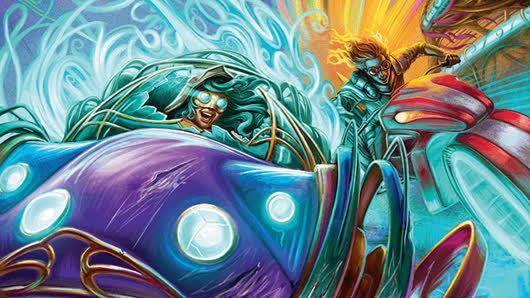In the last period, the rotation has brought a breath of fresh air into Al, allowing the meta to find viable alternatives to Grixis Heist. The deck we will talk about today has some cards that use the heist mechanics, but unlike many other lists, the mechanics are not fundamental to win matches. The deck is a classic Midrange that makes special use of the possibility to revive creatures from the graveyard.
The Channel/Cycling Cards
Perforator Crocodile is a very convenient card for several reasons:
- Can be played and work as mass removal while offering a very relevant body;
- Can be cycled;
- It can allow us, (thanks to the cycling ability), to use some mana spent even during our opponent's turn. In this way, we will be less reluctant to leave some mana available in order to play around opponent's power plays (potentially lethal for us). In fact, in the current meta, you have to be careful to tap out against aggressive decks such as monored. At the same time, those decks will be forced (to play correctly) to respect our mana available, giving us time and consequently the chance to cycle Perforator Crocodile in order to search for other solutions or simply to put it in the graveyard;
- It can be revived after being previously cycled. In this way, it will perform the same function as point 1.
Trumpeting Carnosaur is definitely a very different card than Perforatorcodile. Its channel ability in the current meta is very important: 3 damages at instant speed kill almost every creature played in alchemy right now. As seen previously, being able to put creatures of this type in the graveyard in the first few turns of the game can be very relevant since the deck uses very well the reanimate mechanics. If we succeed to hardcast Trumpeting Carnosaur, we would have a very good body and potentially a 5 mana spell to cast for free.
Harvester of Misery performs a function halfway between the two cards above. We can use it as from the second turn and in the fifth turn we can potentially use it as mass removal while keeping a very important body on the field. It can also be a good reanimating because of its effect and the with which we can put it in cemetery. Also, applying a -2/-2 to some creatures (for example: Heartfire Hero, Tajic, Legion's Valor, and many others) can be a play than a simple removal.
Why are these cards so much needed in the deck?
Push // Pull is a very flexible card as it can perform a double function:
- Low-quality removal;
- Double reanimate.
The truth is that we almost never would want to use this card as a removal. Being able to reanimate two creatures (even if only for one turn) is a very powerful move considering the way this deck has selected the creatures to play. For 6 mana, we could potentially revive two Trumpeting Carnosaurs that in turn might allow us to revive other creatures thanks to Coiling Rebirth. There are of course many possibilities to explore and all turn out to be very strong. We can clear the board and push 12 damage or maybe revive Grenzo, Crooked Jailer and use the spell obtained through heist. In short, Push // Pull within this archetype is able to generate uncontrollable turns for our opponent and can win the game alone.
Very similar reasoning for Coiling Rebirth as well. On top of that, it can even be played with a turn in advance costing only 5 mana. Giving the opponent a card is often not very influential and will almost always be the option to choose. In fact, if we exclude the Legendary Creatures of the deck, all the others are able to generate an advantage sufficient to outweigh opponent's advantage obtained by drawing a card.
We can try to analyze the cases to show that it is almost always profitable for us to let the opponent draw a card in exchange for another 1/1 body accompanied by an effect:
- Impetuous Lootmonger: we know how strong heist is and if we were with an empty hand, this would be a strictly favorable trade for us. Stealing an opponent's card gives the opportunity to filter and go looking for the card that we think is most useful in that situation. At the same time, having a body that can generate Treasure tokens is very relevant. If we were to discard a card from our hand to activate the effect of the second body, then I would suggest evaluating the various situations case by case. We may find ourselves in a comfortable and low-risk situation that might still be worth it. The real question is, however, another: how realistic is it to find ourselves in a situation where we want to revive Impetuous Lootmonger considering the ease that we have to fill the graveyard with much more relevant creatures? From my point of view, and having played many games with the deck, I can tell you that it has never happened to me;
- Preacher of the Schism: in this case, probably the same reasoning as for Impetuous Lootmonger applies. This is not the creature we want to revive and in this specific case, I think that the trade (1 card for our opponent and a body for us) is to be evaluated very carefully case by case;
- Hostile Investigator: here the trade is strictly positive for us as we give a card to our opponent force them to discard a card. On top of that, we are going to create an additional Clue token (that will eventually allow us to draw). 1 for 3 (body, token, discarded card) offering in exchange a minimum of card selection to our opponent seems a good trade for us;
- Harvester of Misery and Perforator Crocodile are obviously to be evaluated according to the board state: if a -2/-2 on the board was enough to clear it, then we will not let our opponent draw a card. Otherwise, we might think of doing it but remembering that in the case of Harvester of Misery, the body generated will die immediately;
- Trumpeting Carnosaur: 1 card for our opponent in order for us to discover 5 is a trade you can take on the fly. You have no idea how many times you will find yourselfating more Coiling Rebirths that will force your opponent to remove the entire just generated or succumb to the advantage created.
Of course, I always recommend evaluating case by case: often I found myself with very low hp and against very aggressive decks, not wanting to let them draw another card.
Conclusions
The deck is very good for ranking and slightly less for farming. The games are not fast at all, but the deck performs very well in bo1. The slowness of the deck is a price to pay in order to receive in exchange difficult to find in other midrange archetypes of the format. Surely I would advise you that, if you want to try it, to also evaluate additional copies of the key cards at the expense of some of the marginal cards.













